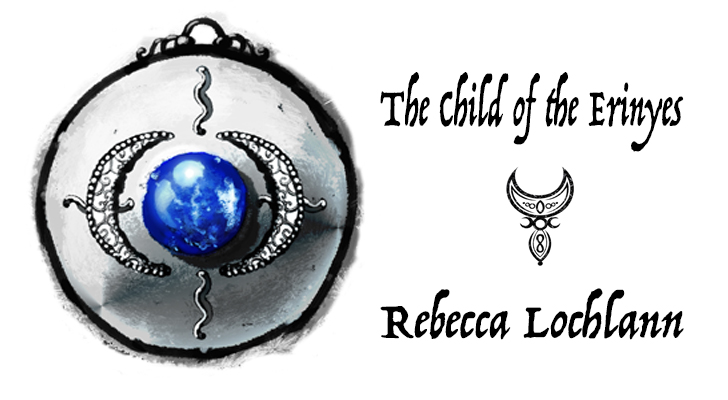Blog Archives
Minos
Minos is a well known title, accepted across the world as the name of a dynasty of kings on Crete. But Robert Graves translates the word “minos” as “Moon-Being,” which suggests it is feminine. Here’s what Graves says in The Greek Myths:
“Minos was a royal title of an Hellenic dynasty which rules Crete in the second millennium, each king ritually marrying the Moon-priestess of Cnossus and taking his title of ‘Moon-being’ from her.” ‘Hellenic’ suggests the term ‘Minos’ relating to a ‘king,’ did not come about until the Hellenic era. It also suggests very strongly that the title belonged to a woman.
Here are several more of his quotes:

(c) Manchester City Galleries; Supplied by The Public Catalogue Foundation https://commons.wikimedia.org/wiki/File:Edward_John_Poynter_-_The_Vision_of_Endymion,_1902.jpg
“The triumph of Minos, son of Zeus, over his brothers refers to the Dorians’ eventual mastery of Crete, but it was Poseidon to whom Minos sacrificed the bull, which again suggests that the earlier holders of the title ‘Minos’ were Aeolians. Crete had for centuries been a very rich country and in the late eighth century BC was shared between the Achaeans, Dorians, Pelasgians, Cydonians (Aeolians) and in the far west of the island ‘true Cretans’.” This line also suggests that the male “Minos” won the title at a later date.
“Pasiphae and Amphitrite are the same Moon-and-Sea-goddess, and Minos, as the ruler of the Mediterranean, became identified with Poseidon.” Again, the suggestion is that Minos is a later invention, perhaps after an overthrow.
“Zagreus: this myth concerns the annual sacrifice of a boy which took place in ancient Crete: a surrogate for Minos the Bull-king. He reigned for a single day, went through a dance illustrative of the five seasons – lion, goat, horse, serpent, and bull-calf – and was then eaten raw.” The holy Day out of Time, which plays an important role in my books.
Graves also says that “Two or three Minos dynasties may have successively reigned in Cnossus.”
In my story, “Minos” is the title of the High Priestess and holy oracle, Themiste. Minos is a secret title, known only to those initiated into the Cretan Mysteries.
Jacquetta Hawkes theorizes about Crete’s ruling house BEFORE the familiar “King Minos” in Dawn of the Gods:
“In the scenes from the seal-stones, not only is the Goddess always the central figure, being served and honoured in a variety of ways; she is sometimes shown seated on a throne. Supposing that a king did rule as consort of the Goddess, one would expect at the very least that at the royal court, which elsewhere, in Egypt and the Orient, was seen as the human reflection of the divine order, there would have been a throne for the queen as the counterpart of the Goddess. Yet in the sacred throne room at Knossos, and apparently also in the state apartment in the residential quarter, the throne stood single and alone.
If it were not for the tradition of King Minos, and the corresponding absence of any recorded memories of Cretan queens, and perhaps also certain strong if unconscious assumptions among Classical scholars, it seems that the archaeological evidence would have been read as favoring a woman on the ritual throne at Knossos.”
She also says: “In addition to these characteristics, there was another which much more strongly implies the self-confidence of women and therefore their secure position in society. This is the fearless and natural emphasis on sexual life that ran through all religious expression and was made obvious in the provocative dress of both sexes and their easy mingling.”
Minos Themiste
Her titles are many: The Moon Incarnate. Moon Being. Most Holy, High Priestess, Seer and Oracle.
And her most secret title: Minos of Kaphtor, which is used only by the fully initiated.

Lilith John Collier https://commons.wikimedia.org/wiki/File:John_Collier_-_Lilith.JPG Public Domain
She has magnificent red hair, setting her apart from her countrymen, and she is so beautiful it’s almost scary.
But oracles on Kaphtor (Crete) burn out early, from the smoke, the bull’s blood, the serpent venom and other concoctions they use to see the future.
She has not yet chosen her successor. She knows she should. But she puts it off. Her eye keeps turning to Aridela, who is the subject of so many frightening prophecies, and who has caused her many sleepless nights.
Perhaps if she makes Aridela her heir, that will somehow protect the child.
It’s worth a try.
What are the Erinyes?
Here is a general definition from Wikipedia:

Photo: William-Adolphe Bouguereau [Public domain], via Wikimedia Commons
When the Titan Cronus castrated his father Uranus and threw his genitalia into the sea, the Erinyes emerged from the drops of blood, while Aphrodite was born from the crests of seafoam. According to variant accounts, they emerged from an even more primordial level from Nyx, “Night”. Their number is usually left indeterminate. Virgil, probably working from an Alexandrian source, recognized three: Alecto (“unceasing”, who appeared in Virgil’s Aeneid), Megaera (“grudging”), and Tisiphone (“avenging murder”). Dante followed Virgil in depicting the same three-charactered triptych of Erinyes; in Canto IX of the Inferno they confront the poets at the gates of the city of Dis. The heads of the Erinyes were wreathed with serpents (compare Gorgon) and their eyes dripped with blood, rendering their appearance rather horrific. Other depictions show them with the wings of a bat or bird and the body of a dog.
HOWEVER, Barbara G. Walker has something else to say in her The Women’s Encyclopedia of Myths and Secrets.
ERINYES: “‘Avenger,’ title of Mother Demeter as the threefold Furies, who punished all trespassers against matriarchal law. In her fearsome avenging aspect, the Goddess sometimes appeared as the Night-mare, with a black horse head wreathed with snakes.”
She goes on to say:
FURIES: “Also called Erinyes or Eumenides, the Furies personified the vengeful moods of the Triple Goddess Demeter, who was also called Erinys as a punisher of sinners. The three Erinyes were emanations of her. “Whenever their number is mentioned there are three of them…But they can all be mentioned together as a single being, an Erinys. The proper meaning of the word is a ‘spirit of anger and revenge’…Above all they represented the Scolding Mother. Whenever a mother was insulted, or perhaps even murdered, the Erinyes appeared. Like swift bitches they pursued all who had flouted blood-kinship and the deference due to it.
Greeks believed the blood of a slain mother infected her murderer with a dread spiritual poison, miasma, the Mother’s Curse. It drew the implacable Furies to their victim, and also infected any who dared help him. In fear of the Furies’ attention, lest they might have inadvertently assisted a matricide, people called the Furies “Good Ones” (Eumenides), hoping to divert their wrath.
Aeschylus called the Furies “Children of Eternal Night.” Sophocles called them “Daughters of Earth and Shadow.” Their individual names were Tisiphone (Retaliation-Destruction), Megaera (Grudge), and Alecto (The Unnameable). Some said they were born of the blood of the castrated Heavenly Father, Uranus; others said they were older than any god. Their antiquity is demonstrated by the fact that they were invoked against killers of kinfolk in the female line only: a relic of the matriarchal age, when all genealogies were reckoned through women.
Aeschylus’s drama The Eumenides presented the Furies pursuing Orestes for killing his mother, Queen Clytemnestra; but they cared nothing for the murder of the father. He was not a real member of the clan. When Orestes asked them why they didn’t punish Clytemnestra for murdering her husband, they answered, “The man she killed was not of blood congenital.” Orestes inquired (as if he didn’t know), “But am I then involved with my mother by blood bond?” The Furies snapped, “Murderer, yes. How else could she have nursed you beneath her heart? Do you forswear your mother’s intimate blood?” In short, the Furies harked back to a matriarchal clan system like the one in pre-Christian Britain, where “the son loved the father no more than a stranger.” Indeed the name of the archaic Triple Goddess of Ireland, Erin, or Eriu, has been linked with the triple Erinyes.
The Furies were also “fairies,” identified with witches because of their ability to lay curses on any who transgressed their law. Such “fairies” may have been real witches who tried to defend the rights of women against encroachment by Christian laws. Their modus operandi could have been similar to that of the Women’s Devil Bush society in Africa: if a woman complained to this society that her husband abused her, he soon died of a mysterious dose of poison.
Christianity adopted the Furies, incongruously enough, as servants of the patriarchal God. They became part of God’s penal system in hell: dog-faced she-demons known as Furies Who Sow Evil, Accusers or Examiners, and Avengers of Crimes. Their duty, as always, was to punish sinners. As “grotesques” they appeared on the tympanum of Bourges Cathedral, with large pregnant bellies bearing the full moon’s Gorgon face, and pendulous breasts terminating in dogs’ heads. Greek art, however, depicted them as stern-faced but beautiful women, bearing torches and scourges, with serpents wreathed in their hair like the Gorgons.
Although classical tradition understood the Fury as a symbol of the impersonal functioning of justice, yet she came to represent men’s hidden fear of women, an image apparently still viable. Psychiatric Worldview says:
‘To those men who are aware of contemporary changes it becomes abundantly clear that there are a number of openly angry women around….Men trained to recognize and enhance their own anger and aggressiveness in a society where rape and revenge are commonplace view angry women with alarm….Men see women project onto them the full extent of their own potential aggressiveness. The spectre of an angry Fury or Medusa’s head strikes fear in men, which is then often awkwardly handled because men are not supposed to display fear. A woman seeking only reasonable social or vocational equity may be perceived by a man as being out to get the kind of revenge that his pride would require had he experienced the narcissistic and practical wounds that she has sustained.'”








